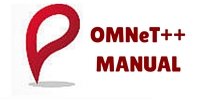The roof of an automobile would appear to be an ideal platform to place multiple-input-multiple-output (MIMO) antennas, having a large ground plane with plenty of space to separate antennas for optimum embedded element radiation efficiency. However, styling concerns often require that the antennas are to be placed close together. Thus, mutual coupling plays an important role in the performance of an MIMO antenna system as it affects the embedded element efficiency and the channel correlation. In this letter, we present a comparison between the measured mutual coupling effect on the ergodic channel capacity of a 2 ×2 MIMO system in a reverberation chamber (i.e., Rayleigh channel) and in a suburban outdoor environment (i.e., Rician channel) at Long Term Evolution (LTE) radio band 13.
The outdoor MIMO capacity was obtained during a vehicle drive test using commercial over-the-air (OTA) LTE test equipment. All measurements were conducted with two-element monopole antennas on a 24-in-diameter circular ground plane. The impact that mutual coupling has in the degradation of the embedded element radiation efficiency and increased correlation between the antennas, and ultimately the decrease in ergodic MIMO channel capacity, is highlighted by these measurements. In addition, the results provide insight into the differences of channel capacity obtained in the rich isotropic multipath environment of a reverberation chamber and the channel capacity obtained in a real-world suburban environment.
